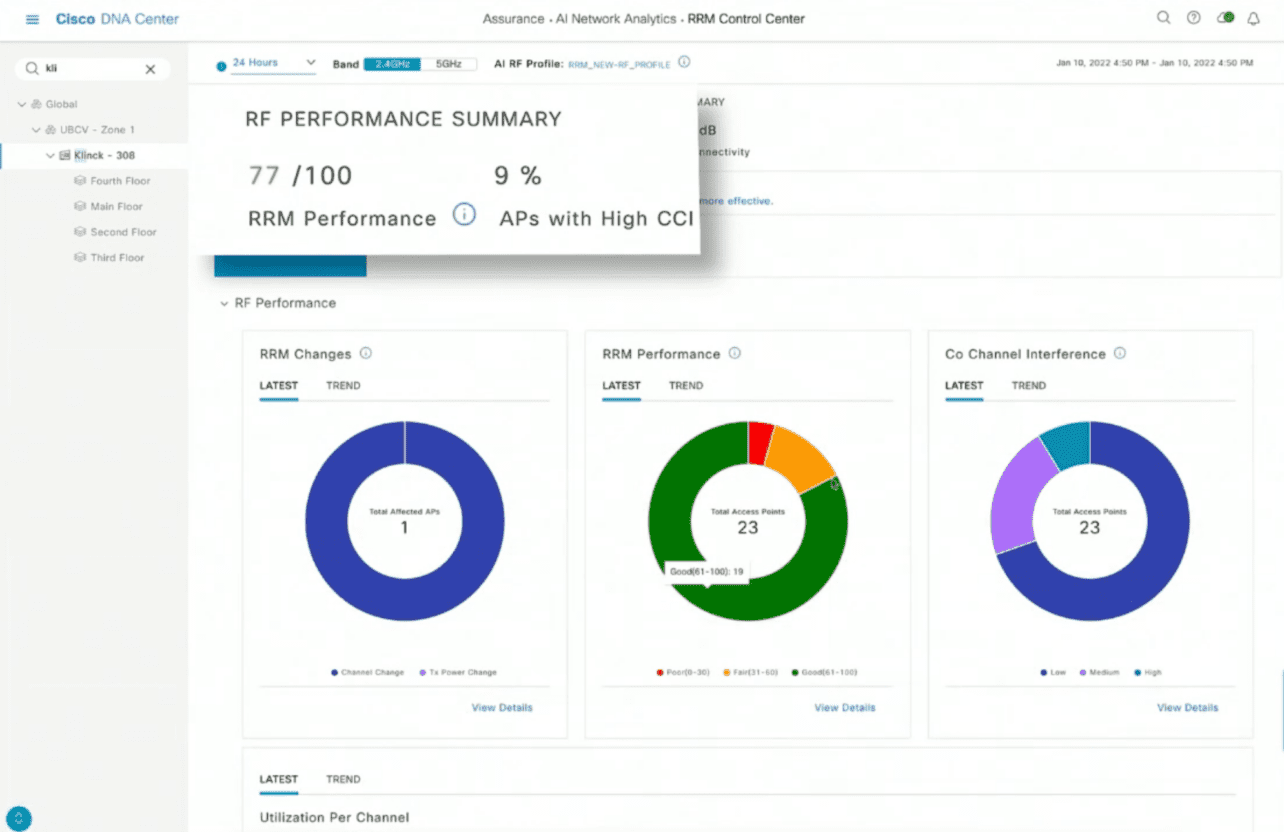Cisco promises ‘wired-like network performance’ with the combination of Wi-Fi 6E and Silicon One powered Catalyst 9000X series.
Network technology is the foundation of Cisco. Yet we haven’t been hearing so much about this business unit lately. In recent years it has been very much about Webex, but Cisco also wanted to talk about things like Kubernetes. In itself, it is only logical that a company like Cisco also looks at new and current developments, of course. However, we did get a sense that Cisco left its networking department somewhat behind, in order to focus on more pressing matters.
The most recent release of the Gartner MQ for Wired and Wireless LAN Access also seems to underscore this sentiment. Whereas Cisco was proudly in the lead there for years, it has now been surpassed by Aruba, Juniper and Extreme Networks. Admittedly, the MQ is about LAN, not WAN, in which Cisco also plays an important role, but it is still a warning sign as far as we are concerned.
Actually, Cisco’s last really big feat in networking technology that we can remember dates back to late 2019. That’s when it announced the Silicon One processors. These are programmable chips. Cisco developed them initially for the backbone of the Internet, the WAN in other words. The Silicon One architecture should bridge different functions, form factors and market segments. By having them all route and switch on the same architecture, you can make great efficiency gains. In addition, the processors are programmable. This means that you can program them exactly for the demands of a specific environment. So it is no longer necessary to include every possible network protocol by default in a network device. If you never use it anywhere anyway, that just creates a delay.
Now also in Catalyst 9000
As already indicated, the Silicon One family of processors was initially aimed at ‘the internet’. Think of (large) service providers, web- or hyperscalers and large enterprise. In other words, anyone for whom a backbone that is as efficient as possible and offers optimum performance is a primary need. However, it was only a matter of time before Silicon One would also appear in ‘lower’ segments. After all, if Cisco’s goal is to build a unified architecture, then it only makes sense that it should be completely end-to-end. We have now arrived at that point, with the introduction of the Catalyst 9000X switches.
Catalyst 9000X becomes available as a premium model in all Catalyst 9000 series in Cisco’s portfolio. The addition of the Silicon One processor architecture gives these switches a solid boost. During the briefing we attended in connection with this introduction, a Cisco spokesperson stated that Silicone One has made it possible to combine routing and switching in a single device. Very few details are known about this new series, but as far as we are concerned it is definitely a big step that Cisco is taking with this.

Wi-Fi 6E
In addition to Silicon One, there was another important theme during the announcement. Namely, Cisco also announced two high-end Wi-Fi 6E access points. One in the Catalyst family and one in the Meraki line. These are the Catalyst 9136 and the Meraki MR57. Cisco’s emphasis during the announcement that these were high-end models suggests that they think everything else announced so far doesn’t fall into that category. This will undoubtedly have to do with the fact that there have already been several announcements around Wi-Fi 6E by the competition. The announcement of the Catalyst 9136 doesn’t come as a surprise, by the way. The model number already appeared on a list of Catalyst access points over six months ago.
Cisco doesn’t cut any corners with the Catalyst 9136 and the MR57, though. Since they both fall under the Cisco umbrella, you might expect that in terms of hardware they are basically the same access points and that only the way you manage it and possibly the functionality are different. However, one look at the number of antennas already indicates that this isn’t the case.

The Catalyst 9136 has twice as many antennas and spatial streams at 5 GHz as the MR57. The 9136 has the following distribution per frequency: 4×4:4 at 2.4 GHz, 8×8:8 at 5 GHz and 4×4:4 at 6 GHz. The MR57 has to make do with slightly more modest specifications: 4×4:4 at 2.4 GHz, 4×4:4 at 5 GHz and 4×4:4 at 6 GHz. With this, Cisco still seems to be setting the Catalyst line higher than Meraki, which in itself is only logical by the way. We have heard that on the Catalyst 9136 it will be possible to split the eight antennas for 5 GHz into two. You can then create two 5GHz radios, as it were.
TIP: Also read our extensive background story on Wi-Fi 6E.
Wired-like via Wi-Fi
Wi-Fi 6E brings Wi-Fi another step closer to the performance achievable with over wired connections. Thanks to OFDMA, Wi-Fi 6 (802.11ax) already gained switching properties. Adding the 6 GHz band also greatly improves overall bandwidth. While still not making Wi-Fi full duplex, it does close the gap with wired connections quite a bit.
However, Wi-Fi 6E alone is not enough at this point, if Cisco is to be believed. For that, you also need to make sure your core network is in order as well. And that’s where the Catalyst 9000X comes in. The combination of the 9000X with Silicon One and Wi-Fi 6E will close the gap even further. At least that’s Cisco’s promise. We’re certainly going to remind the company of that promise on a regular basis. In any case, it’s good to see Cisco’s networking department once again coming out on top. In addition to the above announcements, the event was also about Private 5G. But we’ll come back to that at Mobile World Congress. We will be there this year if all goes well.

